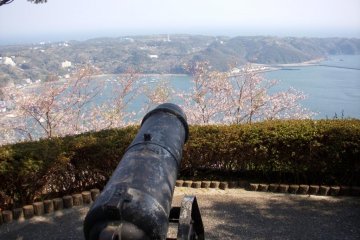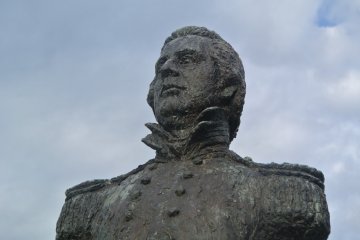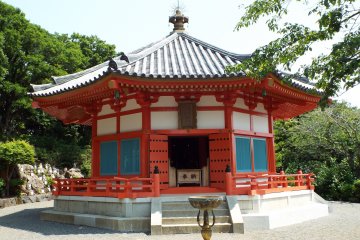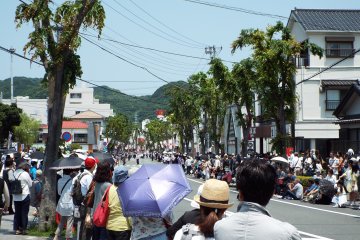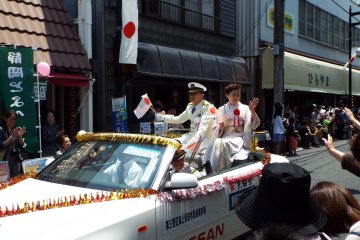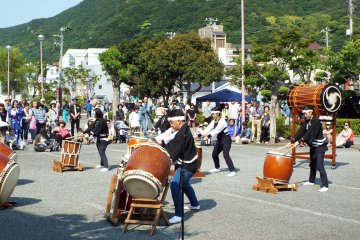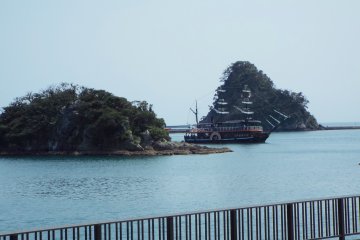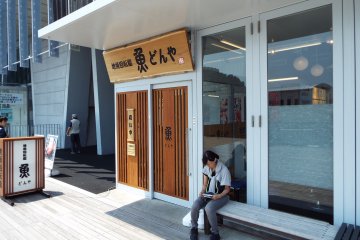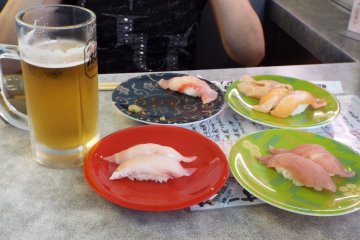Our recent trip to Izu Peninsula was my first and definitely not my last. From our home in Yokohama it is a 3.5 hour train ride, however the last 1.5 hours is on a private line heading down the scenic coast of Izu Peninsula. Our goal was to attend the 77th Black Ship Festival in Shimoda.
On July 8th 1853 Commodore Perry landed at Uraga (Yokosuka) and presented a letter that asked or should I say demanded that Japan open their ports to international trade. He returned 6 months later and signed the treaty of Kanagawa, which allowed the opening of Hakodate and Shimoda ports.
He chose Shimoda because of the safety it provided ships during bad weather. That same year Russia signed the treaty of Shimoda and thus ended the isolation of Japan.
The Black Ship Festival included a parade with high-ranking military officers from both the U.S. and Japan. There were diplomats, prefecture officials, and even the mayor of Newport, Rhode Island, the birthplace of Commodore Perry. She was probably the most enthusiastic person in the parade. I think she had a sore arm after her cheerful waving for an entire hour
The parade was just a small portion of the day’s festivities. At Perry’s Landing Memorial Park a wreath was offered representing the peace between both countries.
The U.S. Navy held a band concert, Geisha dancers performed, and there was a historical drama depicting the ratification of the treaty. There were many other events throughout the town. This festival is held for three days annually during the third week of May.
We really enjoyed the taiko drum show. I am amazed at how long they can beat those drums at such a rapid pace. Even the lady drummers must have strong muscles to endure a long performance.
We walked along Perry Road to see his statue and the area where the treaty was signed. There are many old Edo Period houses, some that you can enter to see how they lived back in the late 1700s.
I talked with American sailors and Marines along the way. They seemed to enjoy the activities.
Prior to the festival, Miwa and I took the ropeway to the top of Mt. Nesugata, where you can view the bay, the Izu Islands, and Shimoda city. There was a Buddhist hall called Aizen-do, which is a place for those praying for love.
Also located in the area are some of the best beaches in Japan. We walked to the fish market and noticed a sign that read; “You can not leave before you eat the Golden Eye Snapper.” Naturally, we tried it at Sakana-Donya restaurant, a conveyer belt sushi bar. It was very tasty and sweet.
This resort town offers many water activities, a UNESCO certified National Geopark, a Fish Market that features the largest catch of Kinmedai (Golden Eye Snapper) in Japan, several temples with one being the Gyokusen-ji temple where Townsend Harris opened the first U.S. Consulate in 1856.
For the Japanese history buff there is The Shimoda Hachiman Shrine festival held in mid August. This is a 350 year-old event, where they carry a portable shrine through the streets to the sounds of flutes and drums.
If that is not enough to bring you to Shimoda, how about the year round blooming of all types of flowers, include over 3 million hydrangea in full color, American Jasmine, Daffodils, and the Cherry blossoms along the Inozawa River?
This area is also known for the many hot springs scattered throughout the peninsula.
Shimoda and Izu Peninsula, is another great place to visit that is not far from the Tokyo metro area.




